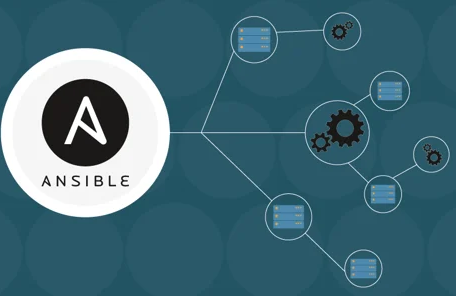For the first time, Red Hat has released a product offering specifically designed to allow software developers to embed Ansible directly within their applications, in a more scalable and robust way.
Called Ansible Inside, this offering comprises many Ansible components to provide scale, durability and execution with greater security of Ansible from within the developers’ applications.
What makes a good use case of Ansible Inside?
As a partner of Red Hat, you may write software that connects to endpoints and performs a task, such as collecting metric information, or streams information to these endpoints. At some point, you may decide to change the settings of those endpoints, or upgrade them. This is where Ansible plays a big part., Ansible and its extensive ecosystem of integrations can support these tasks, and with the ability to embed Ansible directly into applications, you can benefit from:
- A more resilient automation supply chain, from integration to the automation play.
- The Ansible ecosystem owned by the automation integration lifecycle.
- A greater security of automation execution and endpoint connectivity.
- Ansible at-scale through containerized execution or Ansible Mesh job distribution.
How does it work?
Ansible Inside’s special feature is the new Ansible Software Development Kit (SDK). This allows for a true embedded integration of Ansible for the first time that is NOT a command line interface (CLI). With Ansible Inside, you can integrate directly from any Python application to the Python-based Ansible SDK, this gives benefits beyond the CLI such as:
- Asynchronous job execution
- Live data streaming of job stats
- Support for execution environments
- Support for local, Podman, Docker or Mesh jobs.
- Easier metric usage reporting
Who can use Ansible Inside?
Ansible Inside is a Red Hat Partner initiative, which means that you need to be a registered partner and have a use case that fits the offering.
Sample Use Case #1
As a managed services provider I have a bespoke application I use to manage my customer infrastructures. This application needs more/better automation and we think Ansible is a great fit as Ansible has automation coverage for all the endpoints at the customers.
Solution : Natively execute Ansible using our SDK within your management application, reaching into your customers and automating their infrastructures.
Sample Use Case #2
We are a network management solution, our solution uses Red Hat Enterprise Linux machines to monitor a network and return metrics to our cloud application. We would like to patch, configure and upgrade these Red Hat Enterprise Linux machines from our cloud application.
Solution : Natively execute Ansible using our SDK within your cloud application, providing the ability to automate the upgrading, patching and configuring of the Red Hat Enterprise Linux nodes.
Ansible Automation Platform vs Ansible Inside?
Which one is for you? This is relatively simple to answer,
Do you resell/package a software application that you wish to add automation capabilities to and are a Red Hat Partner?
If Yes, then Ansible Inside may be a good fit for you.
Are you an enterprise customer of Red Hat, that wishes to have turn key automation from an enterprise ready platform?
If yes then Ansible Automation Platform is for you.
Ansible Inside allows a developer to natively call Ansible automation from directly within their application. There is no need for an automation platform because your application is the controller plane, the developer creates the project, the credentials and the inventory and scales the jobs. For developers, Ansible Inside lets them focus on developing core application capabilities and not worry about reinventing integrations to common systems - instead, they can leave the automation needs to the experts.
If you would like to know more about this initiative please contact your Red Hat Partner representative.

